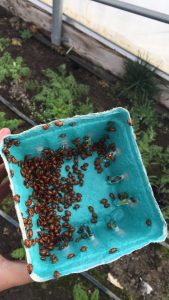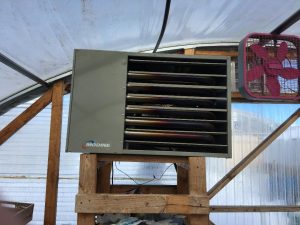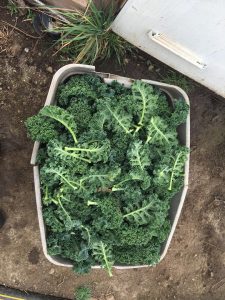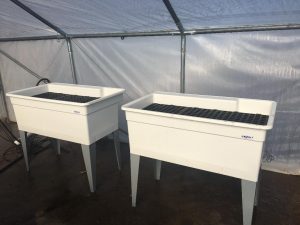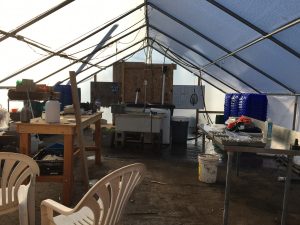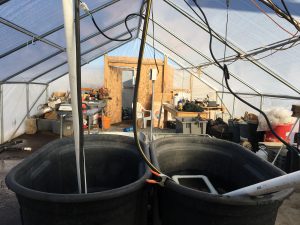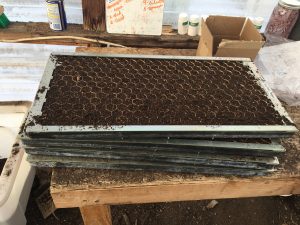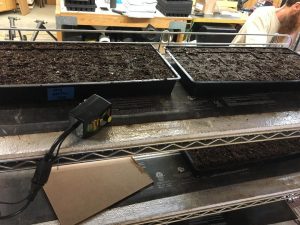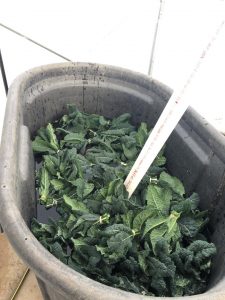This week was very exciting; we transplanted our tomato seedlings (that we had seeded the first week of January) into one of our heated greenhouses. We had to first transport them to the farm. They had been staying in a greenhouse in town with a local gardener that starts seedlings for the food co-op. We attached the trailer that we take to market, which is normally cooled to a temperature of 32 degrees to the truck and turned off the cooler. By heating the trailer to a temperature of 72, we were able to safely transport the plants in an environment that wouldn’t put them into shock.
To transplant the tomatoes, Prema chooses to do one row per bed, with intercropped crops on the far ends of the bed. The crops that we chose to intercrop with are salanova, head lettuce, and beets. This way, we can get the most money as possible off of those beds.
The varieties that we got in the ground so far are Black Cherry and Toronjina (cherry tomatoes) and Big Dena (a slicing variety). There are more varieties on the way, most of which will be heirlooms, that weren’t quite ready to come out of the greenhouse yet.
We had some extra room in the greenhouse that will be used for hot summer crops (like the tomatoes), so this week we also transplanted cucumbers and zucchini into it.


